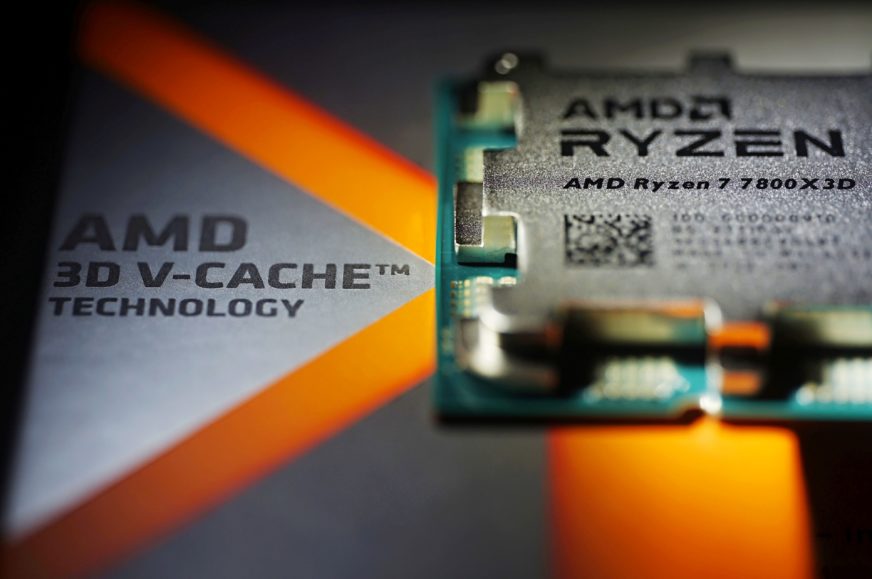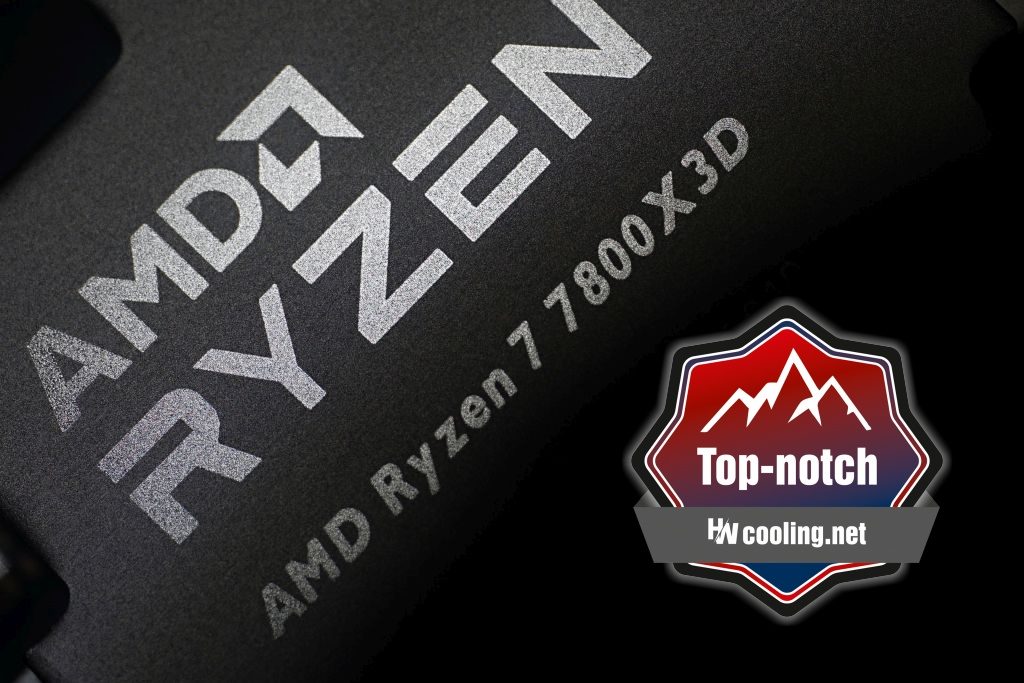Conclusion
The most popular Ryzen 7000 with 3D V-cache obliterates competition in its targeted environment. Intel doesn’t measure up to the Ryzen 7 7800X3D in a comparable price range in terms of speed, and even if someone disregards price and sees the Core i9-13900K(S) as a an apt competitor, when comparing power draw, everyone’s appetite for Intel will go away. Their efficiency is… incomparable, as each is at a different end of the spectrum.
Conclusion
When it comes to which processor is best suited for a more powerful gaming PC, the answer is quite clear – the AMD Ryzen 7 7800X3D. Our regular readers are well aware that we don’t look at things in black and white and try to look at them from as many angles as possible using “but” (top speed, but at the cost of this or that…), however, in this case we found virtually no advantages to the competing options when it comes to using them in the environment the R7 7800X3D is designed for.
Compared to the Core i7-13700K, in gaming the Ryzen 7 7800X3D is not only faster, but also has around half the power draw. The latter only reaches around 50 W, while the Ci7-13700K climbs almost to 100 W and the Ci9-13900K goes even beyond 120 W. With the Ci9-13900KS Intel is pushing the envelope (clock speeds) even harder, so even if this processor’s gaming performance catches up to the R7 7800X3D, it will be at roughly triple the power draw. These are already really dramatic differences and AMD deserves praise for such a leap – they did it well, cleverly, although, of course, Intel processors have some room for undervolting and making the operating characteristics more attractive.
You may recall that we didn’t praise the Ryzen 7 5800X3D to high heavens, it stood out significantly less from the faster-clock-speed 5800X without the 3D V-cache than the Ryzen 7 7800X3D now does compared to the R7 7700X. We don’t know what exactly is most important for such success and why the difference between the R7 5800X3D and R7 5800X is smaller than that of the R7 7800X3D and R7 7700X, although the bigger difference in clock speeds is between the Ryzen 7000s, but there’s definitely a reason there, it comes out similarly (with the R7 7800X3D having a bigger edge over the 8-core X model) in other reputable tests, such as on TechPowerUp! It’s probably going to be about architectural details and some optimizations for Zen 4 and with respect to the 3D V-cache, which we don’t see enough into. The higher bandwidth and lower latency of this cache in the Ryzen 7 7800X3D will probably also be beneficial to some extent.
The lower power draw is achieved by a more efficient manufacturing node and less pressure on core clock speeds. But remarkably, the difference in power draw is greater than the difference in temperatures. Considering the always relatively low power draw, even in the AVX Cinebench workload, 82 °C is quite a lot. And this temperature still corresponds to operating with the relatively powerful Noctua NH-U14S cooler at an ambient air temperature of only 21.0–21.3 °C. In less favourable conditions, with a weaker cooler or in a warmer environment (this can also be caused by poorer system cooling), there will already be a large disparity between power draw and temperature. However, this is due to the fact that all the performance takes place within a single chiplet on a relatively small area and the situation is also not improved by the too thick IHS. In addition, the efficiency of heat transfer from critical locations is obviously reduced to some extent by the 3D V-cache layer, as X3D Ryzens have a higher temperature of CPU cores per unit of power draw than non-X3D models.
Because of the low power draw, the Ryzen 7 7800X3D also encourages pairing with low-cost A620 chipset motherboards (A good, test-proven choice is, for example, the Gigabyte A620M Gaming X). These do have weaker connectivity, but that’s what a typical gaming computer may not lack so much. Even the simplest power delivery can always handle the R7 7800X3D’s current load with ease, which is not the case for competing Intel Raptor Lake processors. These will also work on cheap H610 boards, but alongside bigger or smaller power limits. With the Ryzen 7 7800X3D, you don’t have to worry about anything like that. You don’t even have to worry about hybrid complications like with the Ryzen 9 79x0X3D.
The Ryzen 7 7800X3D achieves top-notch efficiency even outside of gaming, but multi-threaded computing performance is already inherently worse than a number of other processors for “only” eight cores with sixteen threads. Because of the lower clock speeds and the very small benefit of 3D V-cache in such a (workplace) environment, even the R7 7700X is faster with +500–600 MHz/core. The Core i7-13700K, thanks to its little cores, is somewhere else multi-threaded-wise, it is significantly faster, and also has a significantly more favourable price/performance ratio.
The R7 7800X3D is weaker compared to the Ci7-13700K or R7 7700X, even in single-threaded tasks. This is due to significantly lower clock speeds, which are limited by the safe supply voltage for the 3D V-cache. The improvement over the R7 5800X3D is there, but still the R7 7800X3D is only somewhere on par with the R7 5800X in terms of speed, albeit at roughly two-thirds the power draw.
But this is a processor primarily for a gaming PC, where the Ryzen 7 7800X3D, like a shark among small fish, dominates in every aspect you can think of. But even here, the higher the resolution and graphics detail settings, the less impact the CPU has on performance. At high resolutions (e.g. UHD), it’s practically just about the performance of the graphics card. When gaming with Nvidia DLSS or AMD FSR, however, the benefit of the R7 7800X3D will show up even next to a slower mid-range GPU. Also, don’t overlook the smaller drops in minimum fps with this processor. And what else about the Ryzen 7 7800X3D? Only the editorial award „Top-notch“.
English translation and edit by Jozef Dudáš
| AMD Ryzen 7 7800X3D |
| + Large 3D V-Cache with 96 MB |
| + Highest performance for a gaming PC currently available |
| + ... and at the same time with extremely low power draw |
| + Significantly less power hungry than the Ryzen 7 7700X |
| + Suitable for really cheap A620 motherboards due to its low power draw |
| + Top-notch efficiency... |
| + ... even in non-gaming environments (multi-threaded or single-threaded workloads) |
| + Lower minimum fps drops with more stable frame times than processors with smaller L3 cache |
| + High multi-threaded performance |
| + Very high performance per clock (IPC) |
| + State-of-the-art 5 nm manufacturing node |
| + DisplayPort 2.0 support |
| - Worse heat dissipation from the chip, but due to low power draw you can get by with a cheaper cooler |
| - Weaker price/multi-threaded performance ratio. It clearly lags behind the Core i7-13700K in this regard |
| - Lower single-threaded performance in its price class |
| Approximate retail price: 449 EUR |
We would like to thank Datacomp e-shop for their cooperation in providing the tested hardware
Special thanks also to Blackmagic Design (for DaVinci Resolve Studio license), Topaz Labs (for licenses to DeNoise AI, Gigapixel AI and Sharpen AI) and Zoner (for Photo Studio X license)
- Contents
- AMD Ryzen 7 7800X3D in detail
- Methodology: performance tests
- Methodology: how we measure power draw
- Methodology: temperature and clock speed tests
- Test setup
- 3DMark
- Assassin’s Creed: Valhalla
- Borderlands 3
- Counter-Strike: GO
- Cyberpunk 2077
- DOOM Eternal
- F1 2020
- Metro Exodus
- Microsoft Flight Simulator
- Shadow of the Tomb Raider
- Total War Saga: Troy
- Overall gaming performance
- Gaming performance per euro
- PCMark and Geekbench
- Web performance
- 3D rendering: Cinebench, Blender, ...
- Video 1/2: Adobe Premiere Pro
- Video 2/2: DaVinci Resolve Studio
- Graphics effects: Adobe After Effects
- Video encoding
- Audio encoding
- Broadcasting (OBS and Xsplit)
- Photos 1/2: Adobe Photoshop and Lightroom
- Photos 2/2: Affinity Photo, Topaz Labs AI Apps, ZPS X, ...
- (De)compression
- (De)encryption
- Numerical computing
- Simulations
- Memory and cache tests
- Processor power draw curve
- Average processor power draw
- Performance per watt
- Achieved CPU clock speed
- CPU temperature
- Conclusion











First of all fantastic review. Would it be possible for you in the future to also include X-Plane 12 and DCS World in your benchmark suite? No one ever tests them and while they are very niche they are extremly CPU heavy, moreso than any other game. That would be awesome to see if you could do that.
Thank you for the useful tips for expanding test applications. X-Plane 12 and DCS World will probably be included, but probably won’t be in the next test yet. The time complexity of the things we do (not only in the processor tests) is hitting a ceiling with the current editorial capabilities. Anyway, I’m putting both games on the list of “things that would be worthwhile to deal with as part of a methodology revision”.
I would like a clarification on something.
“The main role for the Ryzen 7 7800X3D is played by the same modification – the addition of a second piece of silicon on the CCD chiplet with the CPU cores”
Is this line referring to the extra silicon for the 3D V-cache? Or the modification that only the other 2 7000 X3D chips have of a second CCD on the processor?
Yes, the cited quote refers to a chip with 3D V-cache.